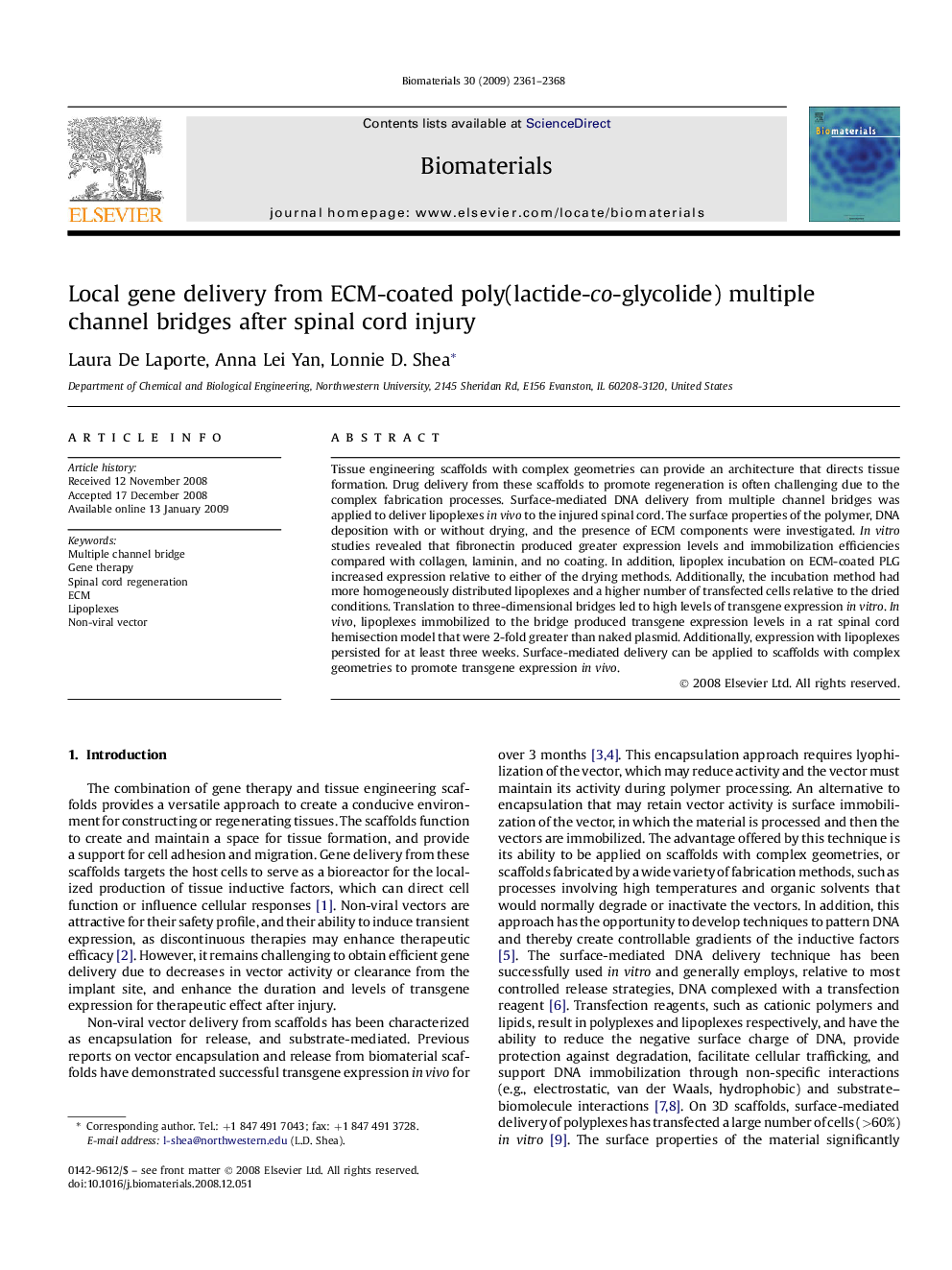| Article ID | Journal | Published Year | Pages | File Type |
|---|---|---|---|---|
| 10520 | Biomaterials | 2009 | 8 Pages |
Tissue engineering scaffolds with complex geometries can provide an architecture that directs tissue formation. Drug delivery from these scaffolds to promote regeneration is often challenging due to the complex fabrication processes. Surface-mediated DNA delivery from multiple channel bridges was applied to deliver lipoplexes in vivo to the injured spinal cord. The surface properties of the polymer, DNA deposition with or without drying, and the presence of ECM components were investigated. In vitro studies revealed that fibronectin produced greater expression levels and immobilization efficiencies compared with collagen, laminin, and no coating. In addition, lipoplex incubation on ECM-coated PLG increased expression relative to either of the drying methods. Additionally, the incubation method had more homogeneously distributed lipoplexes and a higher number of transfected cells relative to the dried conditions. Translation to three-dimensional bridges led to high levels of transgene expression in vitro. In vivo, lipoplexes immobilized to the bridge produced transgene expression levels in a rat spinal cord hemisection model that were 2-fold greater than naked plasmid. Additionally, expression with lipoplexes persisted for at least three weeks. Surface-mediated delivery can be applied to scaffolds with complex geometries to promote transgene expression in vivo.
